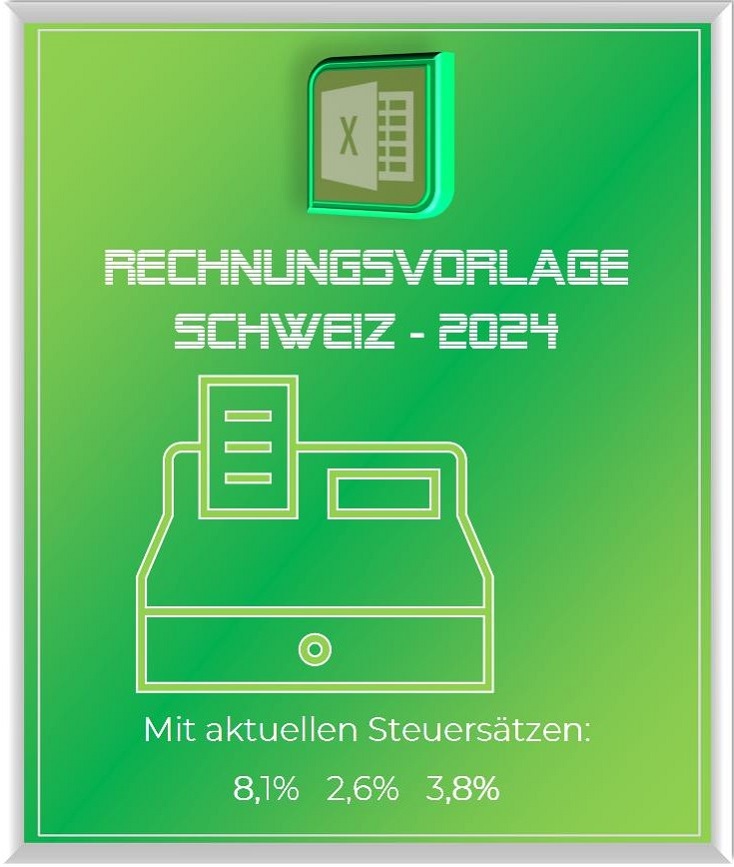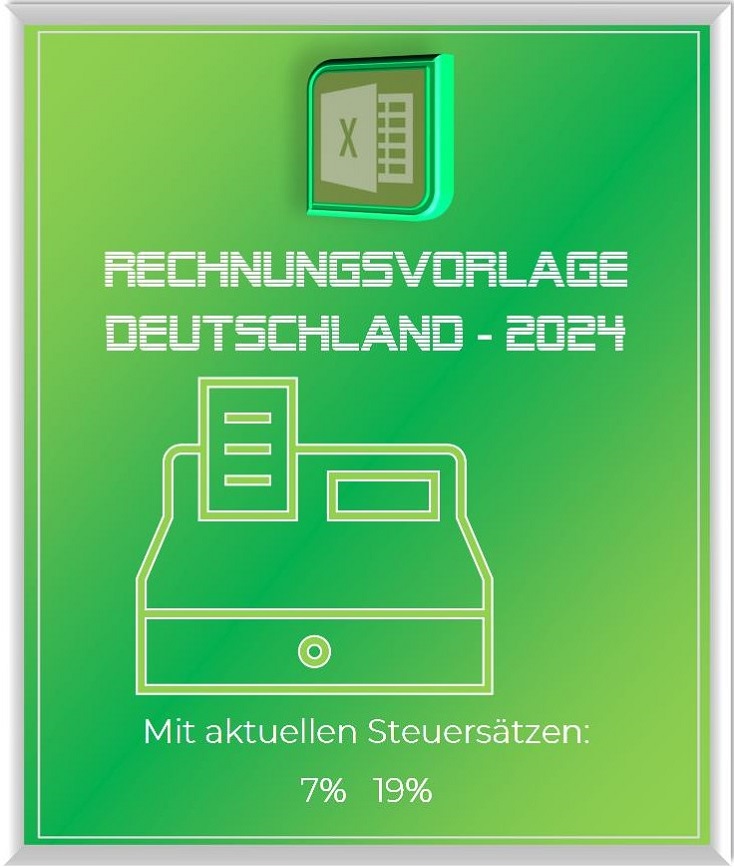The deceptive appearance of digital security
In a world shaped by digitization, IT security is an important issue. Businesses and governments invest millions in defending against cyber attacks. But how safe are we really? The deceptive appearance of digital security is often overlooked. In this article we take a critical look at the effectiveness of IT security and show why technology alone is not enough.

The deceptive appearance of digital security
In a world shaped by digitization, IT security is an important issue. Businesses and governments invest millions in defending against cyber attacks. But how safe are we really? The deceptive appearance of digital security is often overlooked. In this article we take a critical look at the effectiveness of IT security and show why technology alone is not enough.

The deceptive appearance of security in IT
The deceptive appearance of security in IT
The digital security
In an increasingly interconnected world, where dependency on digital technologies is constantly growing, digital security has become a key issue. Businesses, governments and individuals are increasingly taking steps to protect themselves from threats such as cyber attacks, data loss and identity theft. But amidst these efforts is the question: is digital security just a sham?
One aspect that raises this question is the rapid advancement of technologies. While security measures are being developed to defend against current threats, hackers and cybercriminals are constantly working to develop new attack methods. A race ensues between defenders and attackers, which often leads to defensive measures quickly becoming obsolete. This constant struggle can mean that, despite best efforts, digital security is not fully effective and a degree of uncertainty remains. Another factor is the human component. Regardless of advances in technology, users often remain the weakest link in the security chain. Phishing emails, weak passwords, carelessness in handling sensitive data – all these human errors can result in the best technical security precautions being circumvented. As long as people are vulnerable to social manipulation and human error, digital security will remain patchy.
In addition, government surveillance and digital espionage is a controversial issue. While governments claim that digital surveillance is necessary to counter terrorism and other threats, there are concerns about privacy and abuse of such powers. Digital threat prevention can therefore be misused as a monitoring and control tool, which can undermine trust in such measures.
Appearance or reality? About the effectiveness of IT security
The effectiveness of IT security is a complex issue that depends on various factors. While implementing proper security measures can undoubtedly help mitigate risk and protect against threats, there are still some important considerations to consider.
- Attack Prevention: Potential attacks can be intercepted and prevented through the use of firewalls, intrusion detection and prevention systems, antivirus software and other security solutions. This helps reduce the attack surface and increases resilience to known threats.
- Detection and Response: It is important for organizations to be able to detect attacks early and respond appropriately. This is where security monitoring systems, security information and event management (SIEM) solutions, and incident response teams come into play. Rapid detection and response can limit damage and speed up the recovery process.
- Continuous Updating and Patching: As threats continue to evolve, it is vital that IT systems and applications are kept up to date on a regular basis. Installing security patches and regular updates help to fix known vulnerabilities and improve security.
- Training and awareness: The effectiveness of IT security also depends heavily on employee awareness and training. Training programs that educate employees about security risks, phishing attacks, and security best practices can help reduce human error and security vulnerabilities.
- Collaboration and Information Security in the Ecosystem: Businesses and organizations should also collaborate with other actors in the ecosystem to share threat intelligence and best practices. By strengthening information security throughout the value chain, weaknesses can be identified and addressed.
Despite all these efforts, it is important to recognize that IT security is not a final goal, but an ongoing process. There is no 100% guarantee against cyber attacks as attackers are constantly developing new techniques and attack vectors. IT security should therefore be viewed as a combination of different measures that reduce the likelihood of successful attacks and improve the ability to detect and respond.
In order to continuously improve the effectiveness of IT security, it is important to understand current threats, evaluate new technologies and apply proven security standards. Regularly reviewing, updating, and optimizing security measures is essential to keep up with the ever-evolving threat landscape.
The Limits of Digital Defence: Why We Can’t Feel Safe
Despite advances in IT security, there are clear boundaries that can hamper digital resilience. Here are some key points that demonstrate the limitations of digital defense:
- Human error: The human component remains one of the greatest weaknesses in digital defenses. Carelessness, lack of awareness, or insufficient user training can lead to security vulnerabilities. Phishing attacks, in which users click on fraudulent emails or links, are still a common way to bypass security measures. As long as humans exhibit erroneous behavior, digital defenses will be limited.
- Zero-Day Exploits: Zero-day exploits refer to vulnerabilities in software or systems that are not yet known to the developers. Attackers can exploit these vulnerabilities before a patch or fix is available. Because detecting and remediating zero-day exploits takes time and resources, systems remain vulnerable until then.
- Advanced Attack Methods: Cyber criminals are highly imaginative and use increasingly sophisticated attack methods. Advanced Persistent Threats (APTs), where attackers remain unnoticed in a system for a long time, are an example of such methods. Such sophisticated attacks often require targeted defense strategies and can overcome conventional security measures.
- Resources and Budget: Implementing and maintaining a comprehensive IT security system requires significant resources and budget. Small businesses or organizations with limited financial resources can struggle to keep up with the latest security technologies and solutions. This creates gaps in the digital defense that attackers can exploit.
- Complexity of the systems: Modern IT infrastructures are often highly complex and multi-layered. This leads to an increased attack surface and difficulties in integrating and managing security solutions. Integrating different security products and aligning security policies can be challenging, and any inefficiency or gap can compromise digital defenses.
- Targeted State Attacks: States and state-sponsored actors often have significant resources and expertise to carry out advanced attacks. Such targeted attacks, known as “advanced persistent threats“, can endanger even well-protected systems. Protection against such state actors often requires specialized countermeasures and constant adaptation to new threats.
It is important to understand that digital defenses can never be 100% effective. It is a continuous process that requires both technological solutions and human collaboration. It is crucial that companies, organizations and individuals are aware that, despite best efforts, they remain at some risk. A holistic security strategy that encompasses technical, organizational, and human aspects is critical to expanding digital defense boundaries and minimizing risk.
Why technology alone is not enough: Human errors are the biggest weak point
In an increasingly digitized world where technology plays an increasingly important role, it is easy to rely on technical solutions to secure systems and data. But despite the advances in IT security, one fact remains: human error is the greatest vulnerability and can destroy even the most advanced technical protection measures.
- Phishing and social engineering: Phishing attacks are still one of the most common ways to obtain sensitive information. Attackers use fake emails, deceptive websites or phone calls to trick users into revealing confidential information or downloading malicious files. Even the most sophisticated technologies cannot protect against human deception when users respond to fraudulent requests.
- Weak passwords and access data: Weak passwords or insufficient access data are often an invitation for attackers. Many users still choose insecure passwords or use the same password for multiple accounts. This makes it easier for attackers to gain access to accounts and steal sensitive information. Technical security precautions such as firewalls or encryption offer little protection if users do not adequately protect their access data.
- Negligence and carelessness: Even well-trained users can make mistakes in stressful situations or when pressed for time. Accidentally opening a malicious e-mail attachment, missing regular security updates, or inadvertently leaking sensitive information can lead to serious security breaches. Technical security measures cannot completely prevent these human errors.
- Lack of security awareness and training: Users often lack sufficient security awareness and knowledge of current threats. They may not be fully aware of the risks or how to appropriately respond to security threats. Ongoing security training and awareness are critical to keeping users updated and strengthening their ability to detect and respond appropriately to threats.
- Insider Threats: Not all security breaches are caused by external attackers. Insider threats, whether from malicious employees, disaffected employees, or unintended actions, can cause significant damage. Technical security measures alone cannot always protect against internal security risks.
In order to ensure security effectively, it is important that technology and human factors go hand in hand. Technical solutions alone cannot fully compensate for human error. A comprehensive security strategy should include technical safeguards as well as training, awareness raising and the promotion of strong security awareness. By strengthening the human component, we can address the biggest pain point in digital security and increase the effectiveness of our defenses.
IT security as an illusion? How can we really protect ourselves!
At a time when cyber threats are pervasive and businesses, organizations and individuals are increasingly the target of attacks, it can be tempting to view IT security as some kind of illusion. Still, there are effective measures that can be taken to better protect yourself. Here are some approaches that can help strengthen security:
- Risk Assessment and Security Strategy: It is important to conduct a comprehensive risk assessment to identify the specific threats and vulnerabilities one is facing. On this basis, a tailor-made security strategy can be developed that includes suitable technical, organizational and personnel measures.
- Continuous Updating and Patching: Regularly updating software, operating systems, and security solutions is critical to address known vulnerabilities and improve security. Applying security patches promptly is important to minimize the attack surface.
- Strong authentication and access restrictions: Robust authentication, such as using two-factor authentication (2FA) or biometrics, helps secure access to systems and data. Access restrictions should also be implemented to ensure that only authorized users can access sensitive information.
- Awareness and Education: User education is key to increasing security awareness and educating them about common attack vectors such as phishing or social engineering. Users should be able to recognize suspicious emails, use strong passwords and apply security best practices.
- Backing up data: Regular backups are crucial to be able to recover in the event of data loss or ransomware attack. The backups should be kept in a safe place, protected from unauthorized access.
- External support and expertise: In many cases, it can make sense to call in external IT security service providers or experts to carry out a comprehensive review of the security infrastructure, identify vulnerabilities and make recommendations for improving security.
It is important to understand that absolute security does not exist. The threat landscape is constantly evolving, and attackers are always finding new ways to bypass security measures. However, significant improvements in security can be achieved through a combination of technical solutions, conscious behavior and appropriate security practices. IT security requires continuous commitment and an active approach to ensure the protection of our digital systems and data.
The digital security
In an increasingly interconnected world, where dependency on digital technologies is constantly growing, digital security has become a key issue. Businesses, governments and individuals are increasingly taking steps to protect themselves from threats such as cyber attacks, data loss and identity theft. But amidst these efforts is the question: is digital security just a sham?
One aspect that raises this question is the rapid advancement of technologies. While security measures are being developed to defend against current threats, hackers and cybercriminals are constantly working to develop new attack methods. A race ensues between defenders and attackers, which often leads to defensive measures quickly becoming obsolete. This constant struggle can mean that, despite best efforts, digital security is not fully effective and a degree of uncertainty remains. Another factor is the human component. Regardless of advances in technology, users often remain the weakest link in the security chain. Phishing emails, weak passwords, carelessness in handling sensitive data – all these human errors can result in the best technical security precautions being circumvented. As long as people are vulnerable to social manipulation and human error, digital security will remain patchy.
In addition, government surveillance and digital espionage is a controversial issue. While governments claim that digital surveillance is necessary to counter terrorism and other threats, there are concerns about privacy and abuse of such powers. Digital threat prevention can therefore be misused as a monitoring and control tool, which can undermine trust in such measures.
Appearance or reality? About the effectiveness of IT security
The effectiveness of IT security is a complex issue that depends on various factors. While implementing proper security measures can undoubtedly help mitigate risk and protect against threats, there are still some important considerations to consider.
- Attack Prevention: Potential attacks can be intercepted and prevented through the use of firewalls, intrusion detection and prevention systems, antivirus software and other security solutions. This helps reduce the attack surface and increases resilience to known threats.
- Detection and Response: It is important for organizations to be able to detect attacks early and respond appropriately. This is where security monitoring systems, security information and event management (SIEM) solutions, and incident response teams come into play. Rapid detection and response can limit damage and speed up the recovery process.
- Continuous Updating and Patching: As threats continue to evolve, it is vital that IT systems and applications are kept up to date on a regular basis. Installing security patches and regular updates help to fix known vulnerabilities and improve security.
- Training and awareness: The effectiveness of IT security also depends heavily on employee awareness and training. Training programs that educate employees about security risks, phishing attacks, and security best practices can help reduce human error and security vulnerabilities.
- Collaboration and Information Security in the Ecosystem: Businesses and organizations should also collaborate with other actors in the ecosystem to share threat intelligence and best practices. By strengthening information security throughout the value chain, weaknesses can be identified and addressed.
Despite all these efforts, it is important to recognize that IT security is not a final goal, but an ongoing process. There is no 100% guarantee against cyber attacks as attackers are constantly developing new techniques and attack vectors. IT security should therefore be viewed as a combination of different measures that reduce the likelihood of successful attacks and improve the ability to detect and respond.
In order to continuously improve the effectiveness of IT security, it is important to understand current threats, evaluate new technologies and apply proven security standards. Regularly reviewing, updating, and optimizing security measures is essential to keep up with the ever-evolving threat landscape.
The Limits of Digital Defence: Why We Can’t Feel Safe
Despite advances in IT security, there are clear boundaries that can hamper digital resilience. Here are some key points that demonstrate the limitations of digital defense:
- Human error: The human component remains one of the greatest weaknesses in digital defenses. Carelessness, lack of awareness, or insufficient user training can lead to security vulnerabilities. Phishing attacks, in which users click on fraudulent emails or links, are still a common way to bypass security measures. As long as humans exhibit erroneous behavior, digital defenses will be limited.
- Zero-Day Exploits: Zero-day exploits refer to vulnerabilities in software or systems that are not yet known to the developers. Attackers can exploit these vulnerabilities before a patch or fix is available. Because detecting and remediating zero-day exploits takes time and resources, systems remain vulnerable until then.
- Advanced Attack Methods: Cyber criminals are highly imaginative and use increasingly sophisticated attack methods. Advanced Persistent Threats (APTs), where attackers remain unnoticed in a system for a long time, are an example of such methods. Such sophisticated attacks often require targeted defense strategies and can overcome conventional security measures.
- Resources and Budget: Implementing and maintaining a comprehensive IT security system requires significant resources and budget. Small businesses or organizations with limited financial resources can struggle to keep up with the latest security technologies and solutions. This creates gaps in the digital defense that attackers can exploit.
- Complexity of the systems: Modern IT infrastructures are often highly complex and multi-layered. This leads to an increased attack surface and difficulties in integrating and managing security solutions. Integrating different security products and aligning security policies can be challenging, and any inefficiency or gap can compromise digital defenses.
- Targeted State Attacks: States and state-sponsored actors often have significant resources and expertise to carry out advanced attacks. Such targeted attacks, known as “advanced persistent threats“, can endanger even well-protected systems. Protection against such state actors often requires specialized countermeasures and constant adaptation to new threats.
It is important to understand that digital defenses can never be 100% effective. It is a continuous process that requires both technological solutions and human collaboration. It is crucial that companies, organizations and individuals are aware that, despite best efforts, they remain at some risk. A holistic security strategy that encompasses technical, organizational, and human aspects is critical to expanding digital defense boundaries and minimizing risk.
Why technology alone is not enough: Human errors are the biggest weak point
In an increasingly digitized world where technology plays an increasingly important role, it is easy to rely on technical solutions to secure systems and data. But despite the advances in IT security, one fact remains: human error is the greatest vulnerability and can destroy even the most advanced technical protection measures.
- Phishing and social engineering: Phishing attacks are still one of the most common ways to obtain sensitive information. Attackers use fake emails, deceptive websites or phone calls to trick users into revealing confidential information or downloading malicious files. Even the most sophisticated technologies cannot protect against human deception when users respond to fraudulent requests.
- Weak passwords and access data: Weak passwords or insufficient access data are often an invitation for attackers. Many users still choose insecure passwords or use the same password for multiple accounts. This makes it easier for attackers to gain access to accounts and steal sensitive information. Technical security precautions such as firewalls or encryption offer little protection if users do not adequately protect their access data.
- Negligence and carelessness: Even well-trained users can make mistakes in stressful situations or when pressed for time. Accidentally opening a malicious e-mail attachment, missing regular security updates, or inadvertently leaking sensitive information can lead to serious security breaches. Technical security measures cannot completely prevent these human errors.
- Lack of security awareness and training: Users often lack sufficient security awareness and knowledge of current threats. They may not be fully aware of the risks or how to appropriately respond to security threats. Ongoing security training and awareness are critical to keeping users updated and strengthening their ability to detect and respond appropriately to threats.
- Insider Threats: Not all security breaches are caused by external attackers. Insider threats, whether from malicious employees, disaffected employees, or unintended actions, can cause significant damage. Technical security measures alone cannot always protect against internal security risks.
In order to ensure security effectively, it is important that technology and human factors go hand in hand. Technical solutions alone cannot fully compensate for human error. A comprehensive security strategy should include technical safeguards as well as training, awareness raising and the promotion of strong security awareness. By strengthening the human component, we can address the biggest pain point in digital security and increase the effectiveness of our defenses.
IT security as an illusion? How can we really protect ourselves!
At a time when cyber threats are pervasive and businesses, organizations and individuals are increasingly the target of attacks, it can be tempting to view IT security as some kind of illusion. Still, there are effective measures that can be taken to better protect yourself. Here are some approaches that can help strengthen security:
- Risk Assessment and Security Strategy: It is important to conduct a comprehensive risk assessment to identify the specific threats and vulnerabilities one is facing. On this basis, a tailor-made security strategy can be developed that includes suitable technical, organizational and personnel measures.
- Continuous Updating and Patching: Regularly updating software, operating systems, and security solutions is critical to address known vulnerabilities and improve security. Applying security patches promptly is important to minimize the attack surface.
- Strong authentication and access restrictions: Robust authentication, such as using two-factor authentication (2FA) or biometrics, helps secure access to systems and data. Access restrictions should also be implemented to ensure that only authorized users can access sensitive information.
- Awareness and Education: User education is key to increasing security awareness and educating them about common attack vectors such as phishing or social engineering. Users should be able to recognize suspicious emails, use strong passwords and apply security best practices.
- Backing up data: Regular backups are crucial to be able to recover in the event of data loss or ransomware attack. The backups should be kept in a safe place, protected from unauthorized access.
- External support and expertise: In many cases, it can make sense to call in external IT security service providers or experts to carry out a comprehensive review of the security infrastructure, identify vulnerabilities and make recommendations for improving security.
It is important to understand that absolute security does not exist. The threat landscape is constantly evolving, and attackers are always finding new ways to bypass security measures. However, significant improvements in security can be achieved through a combination of technical solutions, conscious behavior and appropriate security practices. IT security requires continuous commitment and an active approach to ensure the protection of our digital systems and data.
Popular Posts:
Integrate and use ChatGPT in Excel – is that possible?
ChatGPT is more than just a simple chatbot. Learn how it can revolutionize how you work with Excel by translating formulas, creating VBA macros, and even promising future integration with Office.
Create Out of Office Notice in Outlook
To create an Out of Office message in Microsoft Outlook - Office 365, and start relaxing on vacation
The best backup solutions for your data
Keep your data safe and secure! Discover our best backup solutions for your valuable information now. Because safety is the be-all and end-all - and we have the perfect tips.
Internet Addiction – A serious look at a growing problem
Internet addiction is just as serious an illness as alcohol or drug addiction. Just that this is a mental illness. In this article we want to go into the phenomenon in more detail and provide assistance.
Main keyboard shortcuts in Windows 10/11
Entdecken Sie die wichtigsten Shortcuts in Windows 11, um Ihre Produktivität zu steigern. Von allgemeinen Befehlen bis hin zu spezifischen Fenster-Management- und System-Shortcuts, lernen Sie, wie Sie mit diesen Tastenkombinationen effizienter arbeiten können.
Encrypt USB stick – These options are available
Protecting sensitive data is essential. Encrypting USB sticks provides an extra layer of security. Whether it's built-in software, operating system features, third-party software, or hardware encryption, there are numerous options.
Popular Posts:
Integrate and use ChatGPT in Excel – is that possible?
ChatGPT is more than just a simple chatbot. Learn how it can revolutionize how you work with Excel by translating formulas, creating VBA macros, and even promising future integration with Office.
Create Out of Office Notice in Outlook
To create an Out of Office message in Microsoft Outlook - Office 365, and start relaxing on vacation
The best backup solutions for your data
Keep your data safe and secure! Discover our best backup solutions for your valuable information now. Because safety is the be-all and end-all - and we have the perfect tips.
Internet Addiction – A serious look at a growing problem
Internet addiction is just as serious an illness as alcohol or drug addiction. Just that this is a mental illness. In this article we want to go into the phenomenon in more detail and provide assistance.
Main keyboard shortcuts in Windows 10/11
Entdecken Sie die wichtigsten Shortcuts in Windows 11, um Ihre Produktivität zu steigern. Von allgemeinen Befehlen bis hin zu spezifischen Fenster-Management- und System-Shortcuts, lernen Sie, wie Sie mit diesen Tastenkombinationen effizienter arbeiten können.
Encrypt USB stick – These options are available
Protecting sensitive data is essential. Encrypting USB sticks provides an extra layer of security. Whether it's built-in software, operating system features, third-party software, or hardware encryption, there are numerous options.












































